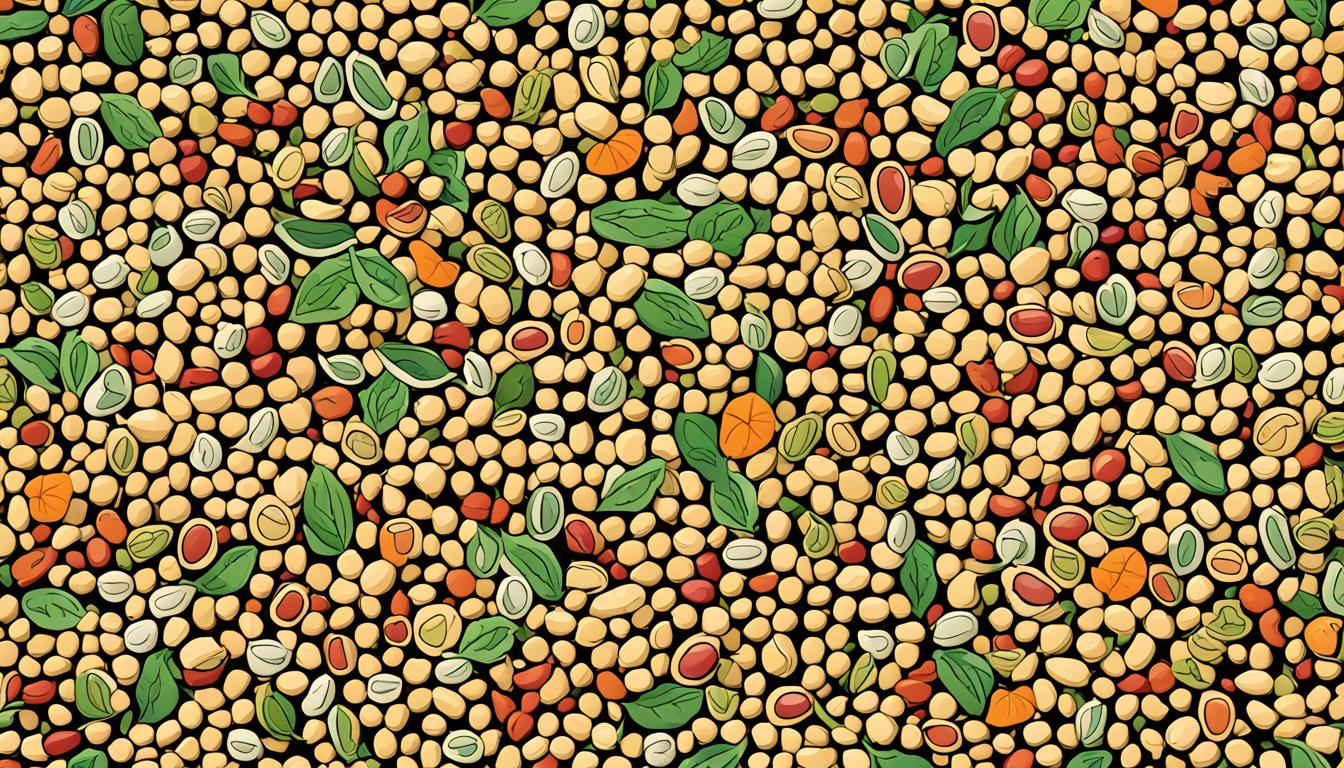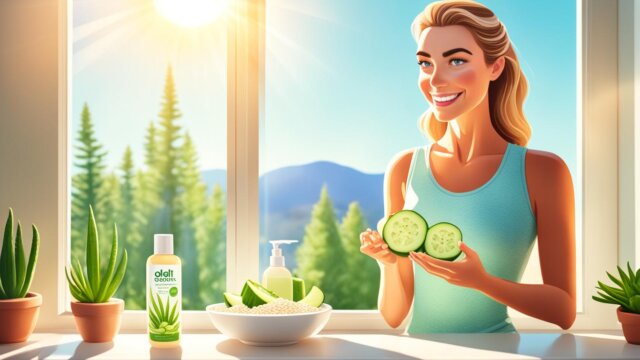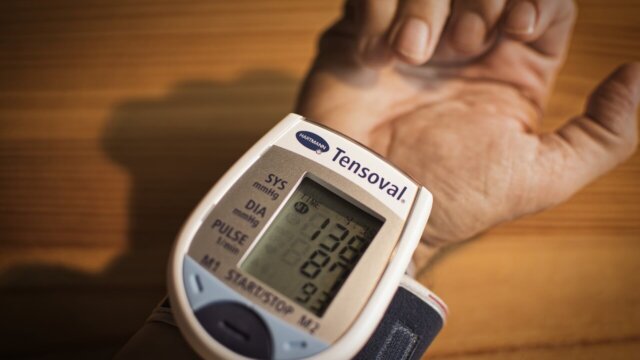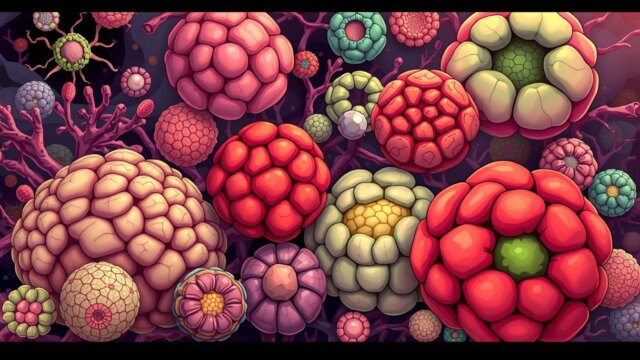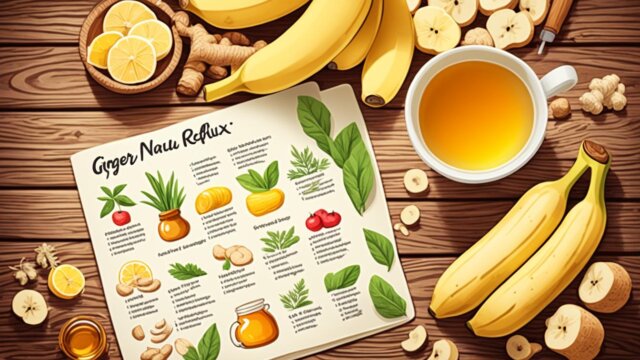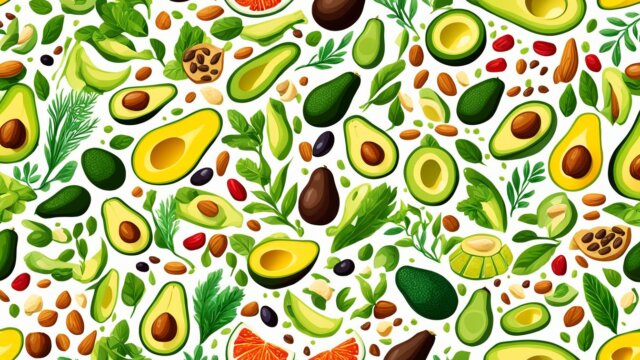FTC disclaimer: This post may contains affiliate links and we will be compensated if you click on a link and make a purchase.
Eating just 50 grams (about 1/4 cup) of legumes daily can cut your risk of early death. Legumes include beans, lentils, peas, peanuts, and soybeans. They are full of important nutrients and have many health perks. They help keep your heart healthy and lower diabetes risk. Legumes are a key food that should be in your diet.
Legumes are low on the glycemic index. This means they can make insulin work better and keep blood sugar levels in check. This can help prevent obesity and type 2 diabetes. They also help lower bad cholesterol and blood pressure. This can cut down the risk of heart disease. Legumes have more protein than wheat and rice. Soy protein in soybeans has all the essential amino acids needed by the body.
Key Takeaways
- Legumes are a diverse family of plants that offer a wide range of health benefits.
- Eating just 50 grams of legumes per day can help reduce the risk of premature death.
- Legumes are low on the glycemic index, helping to regulate blood sugar and reduce the risk of obesity and type 2 diabetes.
- Legumes can help lower cholesterol levels and blood pressure, reducing the risk of cardiovascular disease.
- Legumes are a rich source of plant-based protein, with soy protein being a complete protein.
What are Legumes?
Definition and Types of Legumes
Legumes are a wide group of plants in the Fabaceae or Leguminosae family. They grow in pods. This family includes beans, lentils, and other edible plants.
Beans and lentils are the seeds of these plants. People call the seed inside a legume pod a pulse. Pulses are beans, lentils, and green peas.
There are over 40,000 types of beans worldwide, but only a few are widely eaten. Legumes, like beans, come from the same seeds or fruits. In Europe, legume products grew by 39% from 2013 to 2017.
Legumes include beans, lentils, peas, and peanuts. Beans are in the legume family with lentils, peas, and peanuts. Some less known legumes are asparagus beans and soybeans.
The FAO lists 11 main pulses, not counting green vegetable legumes or oil legumes. Some legumes, like lupins, are grown for their flowers. Legumes help fix nitrogen in the soil with bacteria like Rhizobia.
Beans and legumes are good for health because of their protein and nutrients. Randall Beans offers many types of beans in glass jars for freshness.
Nutritional Value of Legumes
Legumes like beans, lentils, peas, and chickpeas are full of nutrition. They give you lots of legumes vitamins and legumes minerals. A half-cup of legumes has about 115 calories, 20 grams of legumes complex carbohydrates, 7-9 grams of legumes fiber, and 8 grams of protein.
Legumes are high in fiber, which is good for your digestion and blood sugar. They have a low to moderate effect on blood sugar levels.
Legumes are packed with vitamins and minerals like folate, thiamine, copper, manganese, and iron. For example, one cup of cooked chickpeas gives you 71% of the daily folate you need, 64% of copper, and 73% of manganese. Lentils are also full of folate (90% DV), copper (55% DV), and iron (37% DV).
Legumes are a great choice for any diet. Adding different legumes to your meals helps you get enough legumes vitamins, legumes minerals, legumes fiber, and legumes complex carbohydrates.
“Legumes are low in fat, practically free of saturated fat, and cholesterol-free since they are plant-based foods.”
Health Benefits of Legumes
Legumes include beans, lentils, and peas. They are great for your health. Eating them often can help prevent type 2 diabetes. It also helps control blood sugar and blood fats, lowers blood pressure and cholesterol, aids in weight control, and cuts down heart disease risk.
Promoting Heart Health
Legumes are packed with protein, fiber, and important nutrients like folate, potassium, and magnesium. Eating them often can lower your risk of heart disease. They also help lower bad cholesterol and blood pressure, which is good for your heart.
Reducing Diabetes Risk
Legumes are low in calories but high in fiber, making you feel full longer. They have fiber that’s good for your gut and may protect against cancer. Legumes also help your body use insulin better and keep blood sugar levels in check, reducing obesity and diabetes risks.
Aiding Weight Management
Legumes are a great plant-based protein source, perfect for those avoiding meat and dairy. They’re good for your digestive system and may prevent some cancers. Adding more legumes to your diet is an easy way to get important nutrients without spending a lot.
“Various organizations like the United States Department of Agriculture and the Physician Committee for Responsible Medicine advocate for the health benefits of legumes.”
Legumes and Plant-Based Protein
Legumes like beans, lentils, and chickpeas are great for plant-based protein. They have more protein than wheat and rice. This makes them key for vegetarian and vegan diets. They help replace animal protein and may lower the risk of diseases like heart disease, diabetes, and cancer.
Soy protein is a complete protein, meaning it has all the amino acids your body needs. Legumes are also full of fiber, complex carbs, and vitamins and minerals. Adding more legumes to your diet boosts your plant-based protein and supports health.
Plant-Based Protein Source | Protein Content |
|---|---|
Tofu | 20 grams per 1 cup |
Tempeh | 34 grams per 1 cup |
Edamame | 18 grams per 1 cup cooked |
Cooked Lentils | 18 grams per 1 cup |
Chickpeas | 15 grams per 1 cup cooked |
Hemp Hearts | 10 grams per 3 tablespoons |
Soy Milk | 8 grams per 1 cup |
Quinoa | 8 grams per 1 cup cooked |
Pistachios | 6 grams per ¼ cup |
Legumes are a great choice for plant-based protein. They’re packed with protein and other nutrients, making them a great addition to a plant-based diet.
- Beans give you 7-9 grams of protein per ½ cup.
- Lentils have 9 grams of protein per ½ cup.
- Peanuts have 11 grams of protein in a 1/3 cup serving.
- Peanut butter gives you 9 grams of protein in 2 tablespoons.
Adding different legumes to your meals helps you get enough protein and enjoy their health benefits.

“Legumes are a fantastic source of plant-based protein, offering a range of essential nutrients to support overall health and well-being.”
Common Types of Legumes
The legume family, known as Fabaceae, is huge and varied. It includes many edible seeds and pods. From types of beans to types of lentils, legumes are packed with nutrition and flavor. Let’s look at some common other legumes you might find.
Beans
Beans are part of the pulse group. They include adzuki, black, black-eyed peas, cannellini, chickpeas, fava, kidney, lima, mung, navy, and pinto beans. Each bean is different in size, shape, and color. They add unique flavors and textures to dishes.
Lentils
Lentils are smaller and flatter than beans. They come in green, brown, black, red, orange, and yellow. Popular lentil types are black Beluga, French, and Puy lentils, each with its own taste.
Other Legumes
Legumes also include other legumes like peanuts and soybeans (edamame). These oilseed legumes are higher in fat than others, offering a different nutritional profile.
Legumes are a wide and flexible group of plants. They offer many flavors, textures, and nutrients. Whether you like the heartiness of beans, the delicacy of lentils, or the unique qualities of other legumes, there’s a type for every taste.
Legume Variety | Diameter |
|---|---|
Adzuki Beans | 0.256 inch/6.5 mm |
Anasazi Beans | 0.492 inch/12.5 mm |
Appaloosa Beans | 0.551 inch/14 mm |
Black Turtle Beans | 0.354 inch/9 mm |
Black Calypso Beans | 0.433 inch/11 mm |
Black-eyed Peas | 0.315 inch/8 mm |
Bolita Beans | 0.453 inch/11.5 mm |
Cannellini Beans | 0.591 inch/15 mm |
“Legumes represent more than 600 genera and over 19,500 species within the Fabaceae family, making them a truly diverse and versatile group of plants.”
Nutrient Profiles of Popular Legumes
Legumes like lentils, navy beans, and chickpeas are packed with vitamins, minerals, and nutrients. They are great for your health. Learning about their nutrients helps you make better food choices.
Lentils
A cup of cooked lentils has 230 calories, 17.9 grams of protein, and 39.8 grams of carbs. It has less than a gram of fat and 15.6 grams of fiber. Lentils are full of folate, magnesium, calcium, and iron. They are a key part of a healthy diet.
A cup of cooked navy beans has 255 calories, 15 grams of protein, and 47.3 grams of carbs. They have 1.13 grams of fat and 19.1 grams of fiber. Navy beans are rich in magnesium, calcium, and iron. They are a great choice for any meal.
Chickpeas
A cup of cooked chickpeas has 269 calories, 14.5 grams of protein, and 44.9 grams of carbs. They have 4.25 grams of fat and 12.5 grams of fiber. Chickpeas are full of magnesium, calcium, and iron. They are versatile and nutritious.
Adding these legumes to your meals is good for your health. They help keep your heart healthy and can help with weight control. Knowing about lentils, navy beans, and chickpeas helps you make better food choices for your health.
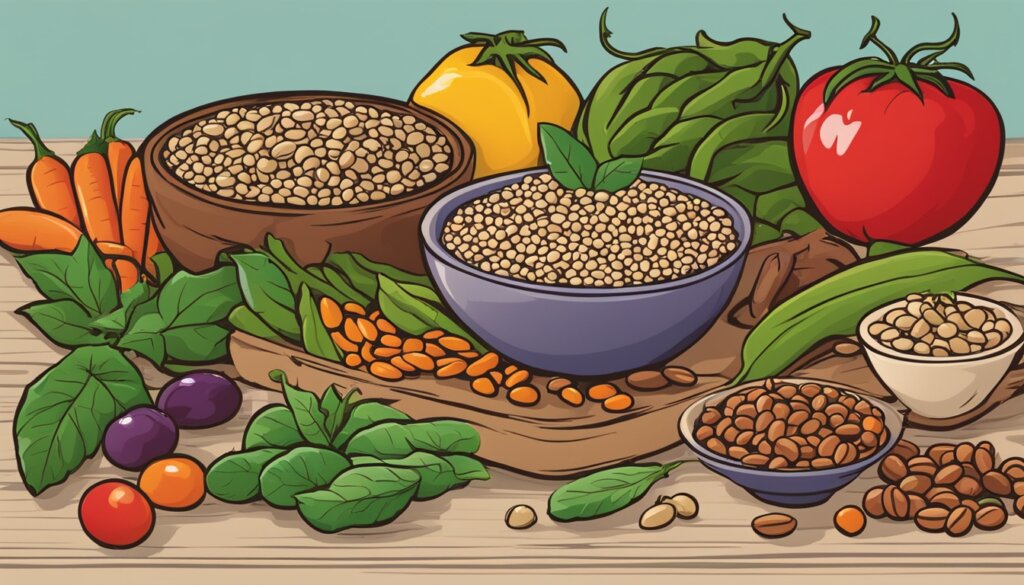
Drawbacks of Legumes
Antinutrients
Legumes are packed with nutrients but also have some compounds called “antinutrients.” These include phytates, lectins, and phytoestrogens. They can block minerals like iron, zinc, and calcium from being absorbed. But, a 2020 review found that eating these foods is still good for you. Soaking, cooking, and fermenting can lower the bad compounds.
Phytic acid in legumes can stop iron, zinc, and calcium from being absorbed well. Lectins, making up to 10% of legume protein, can harm the intestines. The worst one is phytohemagglutinin in red kidney beans.
But, there’s good news. Soaking and boiling legumes can cut down phytic acid and lectins. This makes them safer to eat.
Nutrient | Amount in 1 cup (198g) of Cooked Lentils |
|---|---|
Calories | 230 |
Protein | 18g |
Fiber | 16g |
Carbs | 40g |
Iron | 37% of the Daily Value (DV) |
Folate | 90% of the DV |
Magnesium | 17% of the DV |
Potassium | 16% of the DV |
Legumes are full of healthy fibers, like resistant starch and soluble fibers, which help the gut. But, they might cause gas and bloating. Eating them often can lower cholesterol, cut heart disease risk, and help with blood pressure and weight loss.
“The beneficial effects of including foods with so-called antinutrients outweigh the adverse effects, and that soaking, cooking, and fermenting can reduce the levels of these compounds.”
Flatulence and Digestive Issues
Legumes like beans, lentils, and chickpeas are full of nutrients and fiber. They can sometimes cause gas and stomach discomfort. This is because they have complex carbs called oligosaccharides that our bodies can’t fully digest.
Beans are packed with vitamins and minerals such as potassium, magnesium, folate, iron, and zinc. They also have soluble fiber which helps with digestion, blood sugar, cholesterol, and heart health. But eating too much fiber too fast can cause gas, bloating, diarrhea, and stomach pain.
Beans have a non-digestible carb called raffinose that can make gas and bloating worse when broken down by gut bacteria. Soaking and cooking beans can cut down on raffinose, which means less gas. Digestive enzymes like alpha-galactosidase can also help digest beans and lessen gas from raffinose-rich foods.
On average, people pass gas 13 to 21 times a day, and it’s mostly made up of hydrogen, nitrogen, carbon dioxide, and methane in some people. Beans make gas because of oligosaccharides, which our bodies can’t fully digest. To lessen gas from beans, soak them before cooking and take alpha-galactosidase supplements before eating.
Adding fiber-rich foods slowly and drinking plenty of water can help cut down on gas and bloating from beans. Also, over-the-counter drugs like simethicone can help with bloating and discomfort from gas.
Legume | Fiber per 1/2 cup | Potential Gas Production |
|---|---|---|
Beans | 6-8 grams | Varying levels, with 6-12% of individuals experiencing no decrease |
Lentils | 6-8 grams | Varying levels, with 6-12% of individuals experiencing no decrease |
Soy | 6-8 grams | Varying levels, with 6-12% of individuals experiencing no decrease |
As people get used to eating beans or other legumes, they often feel less gassy. Soaking dried beans for at least 16 hours before cooking can also reduce gas during digestion. By adding legumes slowly and using methods to lower oligosaccharides, you can enjoy their health benefits without the digestive issues.
“Beans, legumes, and soy each contain 6 to 8 grams of fiber per half-cup, which can sometimes lead to gas and bloating, but these issues often subside as the digestive system adjusts to the increased fiber intake.”
Soaking and Cooking Legumes
Getting legumes ready right is key to getting the most out of them and making meals enjoyable. The hot soak method is a great way to how to soak legumes and how to cook legumes easily. It cuts cooking time in half and makes beans tender and easy to digest.
Hot Soak Method
Start by putting dried beans in a big pot and covering them with 10 cups of water for every 2 cups of beans. Heat the water until it boils, then simmer for 2-3 minutes. After that, turn off the heat, cover the pot, and let the beans soak for 4 hours.
This soaking breaks down stuff that can make you gassy, making the beans easier to digest.
After soaking, drain the beans and rinse them with cold water. Then, cook them for 30 minutes to 2 hours, depending on the type. Adding a bit of salt can make the skins tender and cook the beans faster. But, remember, adding things like vinegar or tomatoes can slow down cooking.
Using the hot soak method lets you how to soak legumes and how to cook legumes well. You get tender, easy-to-digest beans that are great for many dishes.
Incorporating Legumes into Your Diet
Legumes like beans, peas, and lentils are great for many dishes. They add plant-based protein, fiber, and new flavors to your meals.
Blending legumes into dips and spreads is easy. Try hummus, spicy pinto bean dip, or fava bean and mint dip. Serve them with whole-grain crackers or veggies for a tasty snack.
Legumes are perfect in salads too. Add cooked lentils or kidney beans to your favorite salad. Or make a 3-bean salad with a tangy dressing.
For bigger meals, use legumes in casseroles, curries, and soups. Try lentil chili, red bean soup, or a veggie burger with beans.
Legumes are great for breakfast too. Add black beans to scrambled eggs or make gallo pinto (rice and beans).
Legumes are full of nutrients and can make your meals healthier and tastier. They help your heart, manage blood sugar, and make meals satisfying.

“Legumes are a superfood, packed with fiber, protein, and essential vitamins and minerals. Incorporating them into your diet can have a profound impact on your overall health and well-being.” – Registered Dietitian, Jane Doe
Legumes and Sustainable Agriculture
Legumes include beans, peas, lentils, and soybeans. They are key in sustainable farming. They fix nitrogen in soil, which is called nitrogen fixation. This saves farmers about $1 per kg on fertilizer costs.
This process also cuts down on synthetic fertilizers. It makes farming better for the planet.
Legumes are a great source of protein that doesn’t harm the environment. They produce 5-7 times less greenhouse gases than other crops. They also help store carbon in soil, supporting sustainable farming.
Crop | Increase in Yields (%) |
|---|---|
Soybean | 86% |
Lentil | 77% |
Groundnut | 75% |
Chickpea | 70% |
But, growing legumes has its challenges. They don’t produce as much as cereal crops. Soybean is the top legume crop, but its yields haven’t grown as much as cereals.
In Europe, legume production has gone down. This is because of cheaper imports and a move to meat in some countries. Europe now depends a lot on soybean and soymeal imports, about 87%.
We need policies and research to help legume farming in Europe and other places. Using legumes can lead to a greener and more sustainable farming future.
Legumes for Vegetarians and Vegans
Legumes are key for vegetarians and vegans. They are a great source of protein. These foods are both tasty and easy on the wallet, helping those on a plant-based diet get enough protein without animal products.
Beans, lentils, and peas are packed with protein. They are vital for vegans to get enough protein. These foods also help lower the risk of breaking a hip, says the Adventist Health Study-2. They are full of lysine, which is good for bones.
Vegans should eat at least three servings of legumes daily. If you’re over 50, aim for four servings. A serving can be ½ cup of cooked beans, ¼ cup of peanuts, or ½ cup of tofu.
Plant-based milks like almond or coconut milk don’t have much protein. Many vegan cheeses are also low in protein.
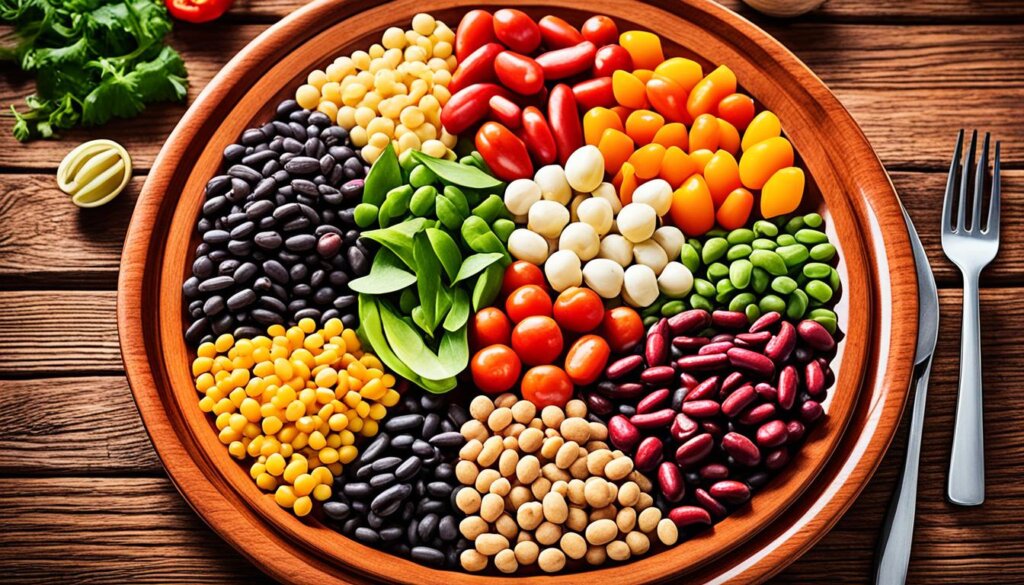
Vegetarians and vegans can make tasty dishes with legumes. Try Vegan Creamy BBQ Chickpeas and Lentils or Easy Vegan Breakfast Burritos. Chickpeas make great Easy Vegan Meatballs and Spaghetti, and lentils can be cooked in the instant pot for a smoky dish. White beans add protein to a Vegan Kale Salad, and chickpeas shine in a Vegan Red Lentil Curry Soup.
Legumes help vegetarians and vegans get enough protein and enjoy tasty, healthy meals. From a Vegan Red Lentil Spinach Soup to a Vegan Chickpea Curry, legumes are a great choice for nourishing your body.
Selecting and Storing Legumes
You can buy legumes in canned, jarred, or dried forms. Canned and jarred ones don’t need soaking or cooking. But, pick ones with low sodium to keep your sodium levels in check.
Keep dried legumes in a cool, dry spot for up to a year. Cooked legumes can stay in the fridge for 3 to 4 days or the freezer for 6 months.
Quick-cooking legumes like black-eyed peas save time, needing only 30 minutes to 1 hour to cook. Remember, 1 cup of dry legumes makes 2 to 3 cups cooked, and 1 pound equals about 6 cups cooked.
Legume Type | Recommended Annual Amount for One Person |
|---|---|
Pinto Beans | 25 lbs |
Split Peas | 10 lbs |
Lima Beans | 5 lbs |
Soybeans | 10 lbs |
Lentils | 5 lbs |
Dry Soup Mix | 5 lbs |
About 60 lbs of legumes are needed for one person a year. This can vary based on your diet and needs.
Knowing how to pick and store legumes helps you keep a steady supply of these healthy foods. This way, you can easily add them to your meals every day.
Conclusion
Legumes are a great food that’s good for your heart, helps with diabetes, and aids in losing weight. They are also cheap and good for the planet. You can easily add them to your meals. If you find legumes hard to digest, soaking and cooking them right can help.
Adding legumes to your meals can make you healthier in many ways. They are great for anyone, whether you eat plant-based or not. They give you protein and other important nutrients in a healthy way.
Legumes are a key food group for staying healthy and feeling good. By learning about the different types and how to cook them, you can easily add these foods to your daily meals. This way, you can enjoy all the good things they do for you.
FAQ
What are legumes?
Legumes are plants in the Fabaceae family. They include beans, lentils, peanuts, peas, and soybeans. These plants are packed with protein, fiber, vitamins, minerals, and complex carbs.
What are the health benefits of legumes?
Legumes can lower cholesterol, blood pressure, and heart disease risk. They also help prevent diabetes and some cancers. Plus, they’re low in calories and high in fiber, aiding in weight control.
Are legumes a good source of plant-based protein?
Yes, legumes are key for vegetarians and vegans. They have more protein than wheat and rice. Soy protein is a complete protein, meaning it has all the essential amino acids.
What are some common types of legumes?
Common legumes are beans like adzuki, black, black-eyed peas, cannellini, chickpeas, fava, kidney, lima, mung, navy, pinto. Lentils, peanuts, and soybeans (edamame) are also common.
Do legumes contain antinutrients?
Yes, legumes have phytates, lectins, and phytoestrogens. These can block essential minerals. But soaking, cooking, and fermenting can lower their levels.
Can legumes cause digestive issues?
Beans have oligosaccharides that might cause bloating and gas. Soaking and using fresh water for cooking can lessen these effects.
How do you incorporate legumes into your diet?
Add legumes to salads, one-pot meals, soups, dips, tacos, burritos, and chili. Or, enjoy them as a side dish on their own.
How do legumes contribute to sustainable agriculture?
Legumes are vital for sustainable farming. They fix nitrogen in the soil, enrich it, and cut down on synthetic fertilizers.
